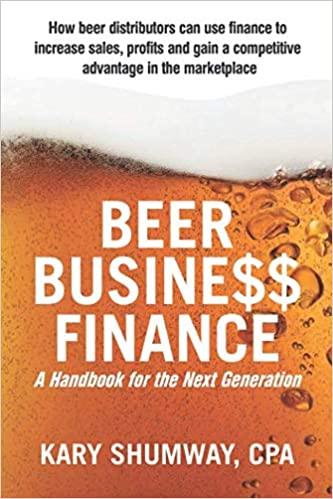Question
Finance Garage A. State any assumptions, if needed. B. Only answers and workings that are clear and legible will get full credit. C. Assume 15%
Finance Garage A. State any assumptions, if needed. B. Only answers and workings that are clear and legible will get full credit. C. Assume 15% as the discount rate, if it is not available. Finance Garage is the name of an advisory set-up by a failed business school professor, who is popularly called as Professor by everyone. Although, Professor was a pathetic teacher he was very successful as an Advisor. Finance Garage (FG, hereafter) earned reputation as a true one-stop-solution for all financial services and advisory needs of both Corporates as well as individuals. Professor manages the firm single handedly and he is the only employee of the FG, of course he runs the show with a handful of MBA students working as interns. Because of the rich exposure an MBA student gets at FG there is a waiting list of students who want to pursue their internship at FG. Every morning Professor walks in to the office around 10 am and prepares for the appointments lined up for the day. From 1.00 pm onwards the clients will walk in and he will complete the days business by 3.00 pm everyday. Some of the client meetings happen over lunch hosted by the clients!! As the Professor is walking in Abhinav (an intern) came to him and asked for a confirmation of the annual subscription to the Wall Street Journal. Abhinav briefed him that the journal have two subscription plans a) a one-time payment of Rs 4,500 or @ Rs 399 per month (both payable at the beginning of the period). Abhinavs recommendation is to go for a Page 2 of 3 monthly subscription which will save blocking a large sum. Professor smiled and asked him to think over again. Sitting in his chamber Professor realized that a total of three meetings are scheduled for the day with each one being very important. Given the shortage of time Professor started carefully reading the details of each case. The first meeting is with a high net-worth investor Ms. Gayatri. She purchased a bond at a price of Rs. 104,800 that pays a coupon of 8% and a face value of Rs 100,000. This bond matures in 5-years from now. After investing in the bond yesterday She heard about another opportunity that pays a higher coupon of 9% at a price of Rs. 108,918.50 and a maturity of 5 years. She is anxious to know whether she made a mistake buying the 8% bond. The second client is Mr. Subhash also an individual investor who swears by equity and is sometimes swayed by market buzz. He invested in the stock of Dandiya Enterprises whose promoter is very close to the government. Dandiya paid a dividend of Rs 5/- just a while ago and the market buzz is the incumbent government will lose to the opposition party in the elections whose results are awaited. Because of the adverse government, Dandiya Enterprises will experience a negative growth rate of 8% P.A. in the forthcoming five years. In the subsequent years the stock will grow perpetually at a long-term growth rate of 15% per annum. If the required rate of return is 18% what will be the value of the stock with these changes. The third and final client is Mr. Aijaz representing M/s. Raymobile Motors which is a very profitable company. It needs financial analysis of an investment in a new production machine for Rs. 1250,000. The purchase of this machine will result in an increase in sales revenues of Rs. 425,000 per year and the associated expenses (excluding depreciation) are 45% of the revenues. To operate this machine properly, workers would have to go through a one-time brief training session before commissioning the machine and that would cost Rs. 25,000 after tax. In addition, it would cost Rs. 5,000 after tax to install this machine properly. They will incur Rs 25,000 as consultancy fee to the Professor. Also, because this machine is extremely efficient, its purchase would necessitate a change in working capital as follows:

This machine has an expected life of 5 years, after which it will have no salvage value. Assume simplified straight-line depreciation, that this machine is being depreciated down to zero, a 34 percent marginal tax rate, and a required rate of return of 15 percent. Page 3 of 3 Professor called you to prepare suitable recommendations to Saraswathy, Anand and Nihal along with the necessary workings. Specifically, he wants analysis and workings to answer the following questions: 1. Did Gayathri committed a mistake investing in 8% coupon bond? Show with necessary details. (3 marks) 2. What will be the value of the stock of Dandiya Enterprises and how much will be the change in stock value? (5 marks) 3. What will be the recommendation to Aijaz? Show the initial investment, annual operating cashflow and the terminal cashflow. (9 marks) 4. How will you prove that Abhinav is wrong about the subscription plan? (3 marks)
Working capital component Without this machine With this machine Inventories 25000 35000 Account receivables 500000 750000 Account payables 200000 250000Step by Step Solution
There are 3 Steps involved in it
Step: 1

Get Instant Access to Expert-Tailored Solutions
See step-by-step solutions with expert insights and AI powered tools for academic success
Step: 2

Step: 3

Ace Your Homework with AI
Get the answers you need in no time with our AI-driven, step-by-step assistance
Get Started


